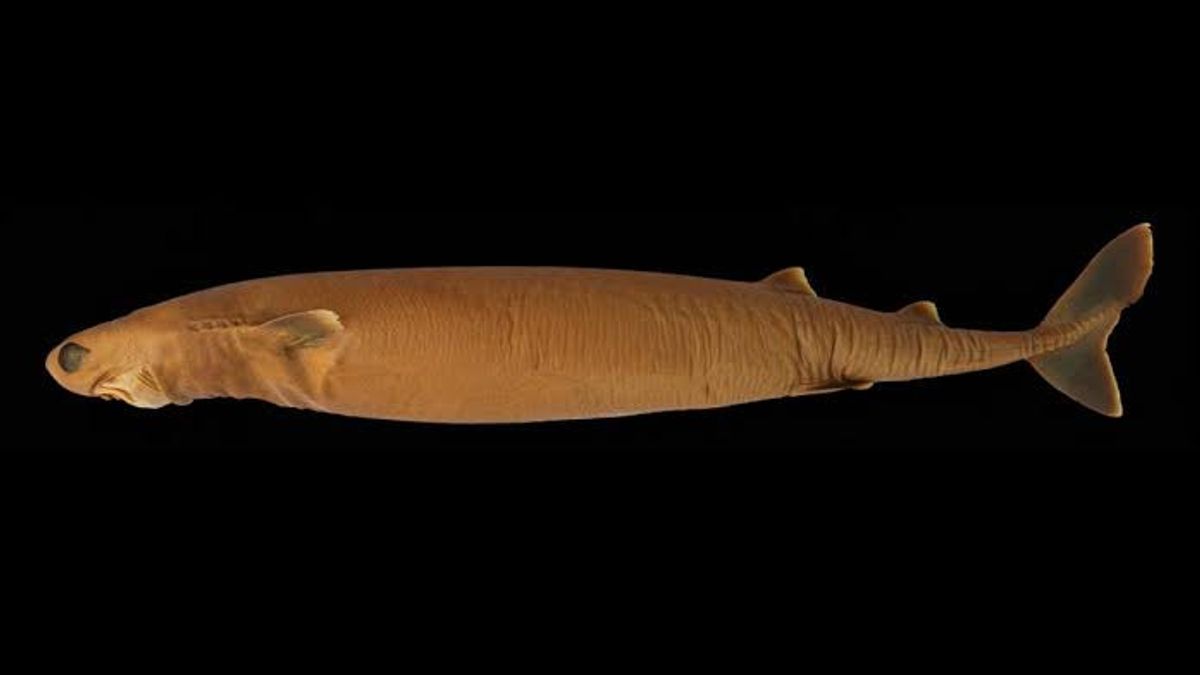JAKARTA - Scientists in a new study found that a shark dubbed Cookiecutter or cookie cutter shark suddenly became very scary. They reportedly terrorize all the animals in the ocean, even the big ones.
Nicknamed the Cookiecutter shark because of its quite unique habit. After biting its prey, the shark, whose scientific name is Isistius brasiliensis, will leave circular scars like cake batter that has been perforated with a mold.
These green-eyed little fish can grow to a length of 20 inches (50 centimeters). Cookiecutter sharks use their pointed teeth to eat great white sharks that are 10 times their size, and have even been known to bite chunks of human flesh.
Scientists often observe bite marks on the larger animals that the Cookiecutter shark preys on. Not only attacking directly, Cookiecutter also chews animals at the bottom of the food chain, so it plays an important role in marine ecosystems.
"They eat everything, from the smallest creatures, to predatory fish, like white sharks, orcas, and all the animals in the ocean. Not many animals do this kind of thing," said Cookiecutter shark lead researcher and assistant professor in the School of Marine Science and Policy. at the University of Delaware, Aaron Carlisle as quoted from Live Science, Wednesday, September 8.
In fact, these sharks are often found eating species smaller than their size at lower depths, including crustaceans, squid and small fish. While larger animals are only 10 percent likely to be targeted by Cookiecutter while in the high seas.
However, the shark's stomach was mostly empty of food, but the team figured out what the animals were eating by looking at the chemical composition of their tissues. The team also examined environmental DNA (eDNA), or the presence of DNA that was left behind even when there was no tissue to study.
"Environmental DNA is an increasingly popular and powerful tool that works under the idea that, if an animal swims in the ocean, it will release DNA in the water," Carlisle said.
"So if you take a sample of water and filter it, you can extract DNA from everything in that water mass and identify what species was there. So we tried it on their guts."
However, researchers did not get a lot of research samples because of the limited geography. That means, it's not yet clear whether this behavior occurs across the entire global range of Cookiecutter sharks.
For information, this Cookiecutter shark lives in tropical and subtropical waters at depths of more than 1,500 meters. If you want to see it, Cookiecutters are usually near the surface at night, when hunting for larger prey in the upper ocean.
The English, Chinese, Japanese, Arabic, and French versions are automatically generated by the AI. So there may still be inaccuracies in translating, please always see Indonesian as our main language. (system supported by DigitalSiber.id)












